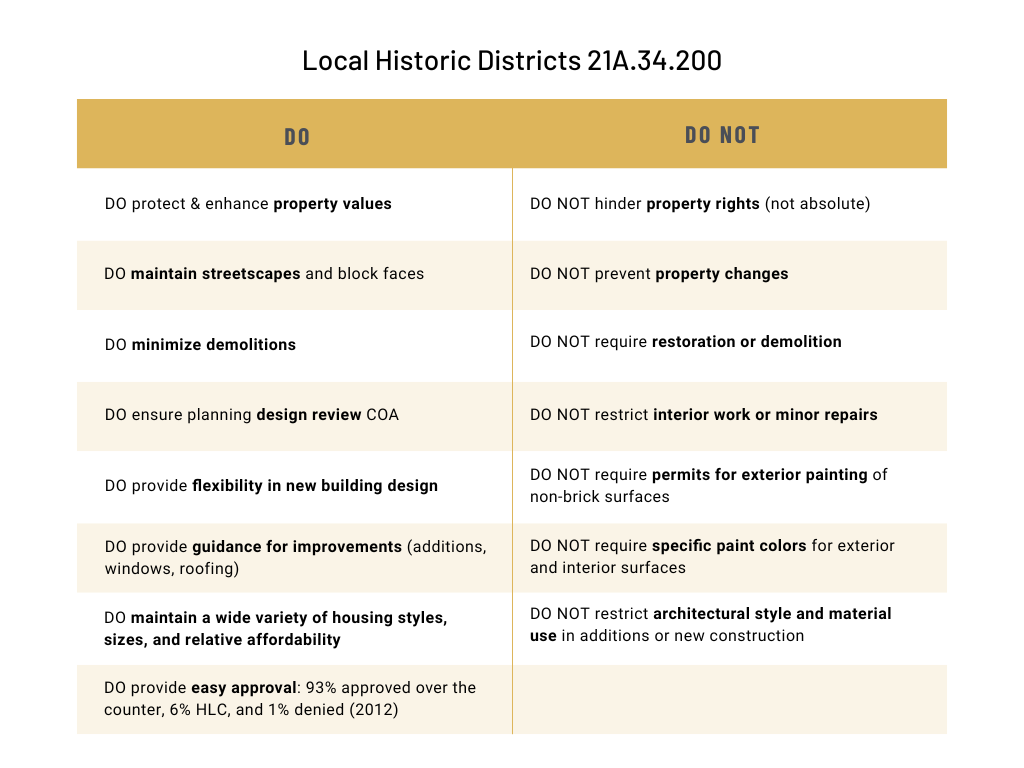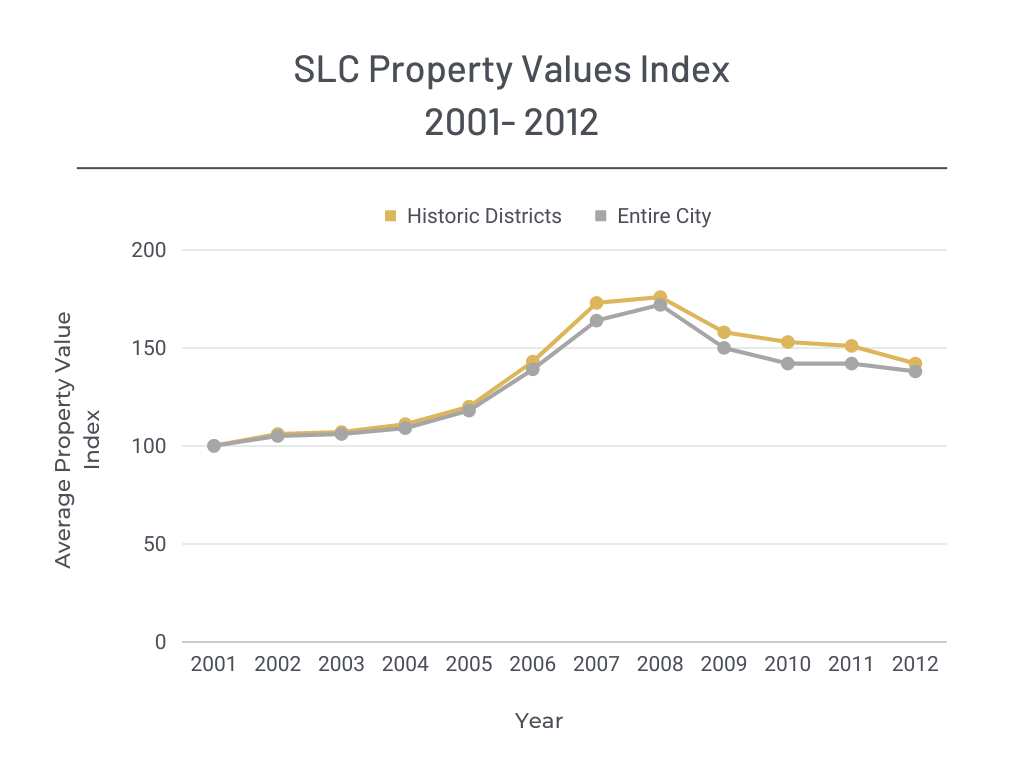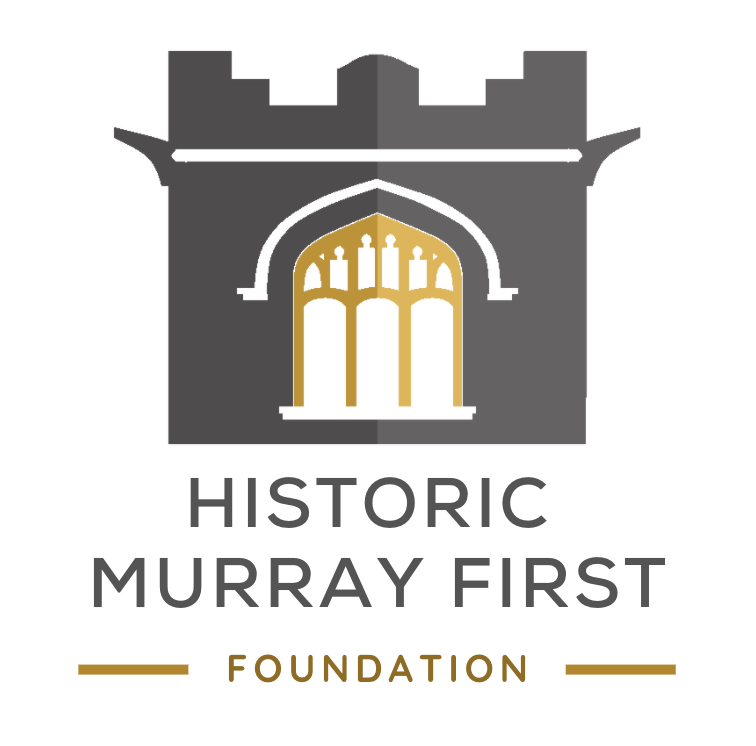The Murray Downtown Residential Historic District
Needs our protection
Throughout Utah, many cities and towns are facing the needless destruction of their treasured historic resources through demolition and insensitive alterations. We’ve experienced this tragedy first-hand through the loss of our Murray First Ward and Carnegie Library in March 2020.
However, many municipalities in Utah have taken steps to better protect their historic resources through the creation of a local historic district (LHD). By establishing a LHD in Murray, all proposed substantial changes to exterior architectural features that are visible from a public way will be reviewed and approved by a local historic district commission. In this way, needless demolitions and alterations can be permanently prevented. Many cities and towns in Utah have already recognized the value of an LHD and have established one or more within their communities.
Murray’s Current Historic Listings
Murray currently has three historic districts and 15 historic buildings listed on the federally recognized National Register of Historic Places (NRHP). However, this list grows smaller every year. We have already lost two individual buildings on the list and several buildings located within those historic districts. If these buildings are listed as “historic,” why aren’t they already protected?
It is essential to know that there are two kinds of historic districts in Utah: Local Historic Districts (LHD) and National Register Historic Districts (NRHP). Although an area may be designated as both an LHD and an NRHP historic district, there are substantial differences between the two designations:
- The National Register of Historic Places (NRHP) is essentially a federal inventory of buildings, structures, sites, objects, and districts that are significant in our nation’s history, culture, architecture, or archaeology, and are deemed worthy of recognition and preservation. It is administered by the National Park Service (NPS) through the Utah State Historic Preservation Office (SHPO).
- While a listing in the National Register provides formal recognition of a property’s significance, it does not place any restrictions or conditions on changes made by a private property owner.
- A Local Historic District (LHD), sometimes called a local landmark district or a historic district overlay, is established locally through a city council vote. It provides a regulatory review process for all substantial changes to exterior architectural features of historic buildings visible from a public way.
Murray’s existing historic districts are listed on the National Register of Historic Places (NRHP), which means there are no protections in place. If a developer purchases property in these districts, they are easily able to demolish historic structures and build incompatible structures in their place, so long as it is approved according to existing zoning. Or, for example, if a homeowner wants to build an addition that is out-of-scale for their bungalow or ranch-style neighborhood, there’s nothing to stop them.


The Historic Murray First Foundation (HMFF) is encouraging property owners and residents to get involved in preserving their neighborhood by proposing a Local Historic District (LHD) for the Murray Downtown Residential Historic District.
The reason you received our mailer is because you currently live within the NRHP historic district . The location is roughly bounded by east 4800 South, east Clark Street, east Vine Street, and Center Street. This district is the best representative of residential development near Murray City’s historic downtown business district. It was listed on the NRHP in 2005. It is locally significant as a physical reflection of its residential architecture and the historic development of the city from its agricultural beginnings through its industrial era and current status as a small suburban city. The buildings within the district represent the wide range of architectural styles and plans popular in the city and the state of Utah between 1870 and 1967 and retain a high degree of integrity. The NRHP district was expanded in 2020 to include the Murray Hill Gardens neighborhood north of 4800 South, which may be considered as an LHD in the future.
Establishing the original Murray Downtown Residential neighborhood as a Local Historic District (LHD), will provide the area with the strongest form of protection that can be given to historic properties. The purpose of an LHD is to:
- Preserve and protect the distinctive characteristics of buildings and places significant in the history of Utah and its cities and towns.
- Maintain and improve the settings of those buildings and places.
- Encourage new designs compatible with existing buildings in the district.
The benefits of LHDs are many:
- They can be credited with saving the character of many areas in Utah.
- Provide protection from demolitions and inappropriate exterior remodeling.
- Provide assurance that the historic built environment will be there for generations to enjoy.
- Provide a visual of the past.
- Create pride in the community.
- Create neighborhood stabilization.

Historic districts do not prevent all changes from occurring, nor do they prevent all demolition, new construction, or development. The intent is to make changes and additions harmonious, and prevent the intrustion of incongruous elements that might detract from the aesthetic and historic values of the district. The purpose of an LHD is not to halt growth, but to allow for thoughtful consideratioons of change.
Homeowner Benefits to Living in a Local Historic District
Maintain the character of a homeowner’s block and/or street
Property values are improved
Value of home sales are higher in LHDs than outside nearby homes
Reduced foreclosure risk


Please click here for the survey
FAQ
This historic neighborhood is listed on the National Register of Historic Places (NRHP) and there is a strong desire to preserve its integrity. With its proximity to Murray City Center District (MCCD), the neighborhood is threatened, as there have been several heritage structures demolished over the years. These heritage homes are irreplaceable, gone forever once demolished for new development . Members of Historic Murray First Foundation have been working on preservation and compatibility issues since 2018.
A historic district is a group of buildings, properties, or sites that have been designated by the City as historically and/or architecturally significant. Buildings, structures, objects, and sites within a historic district are normally divided into two categories: contributing or non-contributing.
- Contributing structures are at least 50 years old, must retain their original architectural integrity, and/or have an association with an important person or piece of Murray history.
- Non-contributing structures either do not meet these criteria or have had their historical features altered.
Murray’s Downtown Residential historic district is the best representation of the residential settlement and development of Murray City. It is locally significant as a physical reflection of its residential architecture and the historic development of the city from its agricultural beginnings through its industrial era and current status as a small suburban city. The buildings within the district represent the wide range of architectural styles and plans popular in the city and the state of Utah between 1870 and 1954. It retains a high degree of historic integrity with 185 structures (nearly 70%) contributing to the historic character of the neighborhood.
The 2005 National Register nomination talks about the survey of structures, determining those that are historically contributing and those that are not.
Buildings were classified as either contributing or non-contributing based on the results of a reconnaissance-level survey of the neighborhood area in 2004. These evaluations were updated in 2020 when the district was expanded. Each building was evaluated for eligibility using the following guidelines set by the Utah State Historic Preservation Office:
- Eligible/significant: built within the historic period and retains integrity; excellent example of a style or type; unaltered or only minor alterations or additions; individually eligible for National Register for architectural significance; also, buildings of known historical significance.
- Eligible/Contributing: built within the historic period and retains integrity; good example of a style or type, but not as well-preserved or well-executed as a significant building, though overall integrity is retained; eligible for National Register as part of a potential historic district or primarily for historical, rather than architectural, reasons. The additions do not detract and may be reversible.
- Ineligible/Non-Contributing: built during the historic period but has had major alterations or additions; no longer retains integrity. The resource may still have local historical significance.
- Out-of-period/Non-Contributing: constructed outside the historic period.
Evaluations are based primarily on age and architectural integrity. A building may sometimes appear newer than its actual construction date because of intrusive alterations and additions. Surveyors attempt to determine the oldest portion of the building by looking for signs of greater age such as composition, massing, fenestration, foundation materials, chimneys, and landscaping.
Local historic districts usually enjoy the greatest level of protection under the law from any issues that may compromise historic integrity. This is because many land-use decisions are made at the local level. Local building design criteria are typically derived from the Secretary of Interior’s Standards for the Rehabilitation of Historic Buildings.
For example, protections Salt Lake City, according to 21A.34.200 include:
- Demolition denial, with an appeal process for economic hardship, safety, or life-threatening circumstances.
- Design review by city planning staff and/or a Historic Landmark Commission (HLC)
- Minor alterations can be approved by city planning staff while more substantial work is often reviewed by a Historic Landmark Commission (HLC)
- Public notification process
- Design guidelines that provide local standards that may be appealed; along with national guidelines that must be adhered to in design review
- The HLC’s decisions are binding, not advisory, and are enforced by the City’s planning staffing, building services division (when a permit is pulled), and the enforcement division on the ground during construction
A local historic district does not:
- Restrict the use of a property
- Prevent owners from making changes
- Require restoration or demolition
- Require additional permits for painting, minor repairs, or interior work
- Devalue a property

Property owners can be involved in crafting ordinance language while working with city officials and planners.
The purpose of the guidelines is to make sure the character-defining features of a building are not altered. Keeping the original features of a historic home maintains the value of the home and the historic character of the district. The guidelines focus on key preservation principles:
- Respect the historic design character of the building
- Seek uses that are compatible with the historic character of the building
- Protect and maintain significant features and stylish elements
- Preserve any existing original site features or original building materials and features
- Repair deteriorated historic features and replace only those elements that cannot be repaired
Private property rights are among the most important rights enjoyed by Americans. They give us financial security and they help protect our personal investments. Precious as they are, our property rights are not absolute—they come with responsibilities. Communities routinely make investments and create land use policies that affect property rights and changes in property values for the greater good. Regulating teardowns is no different because they impact our quality of life and the property rights and investments of the people who have to live with the results. (Source: preservationnation.org)
Read more about how the concept of property rights has changed over time in this Introduction to Property Rights: A Historical Perspective from the University of Illinois Extension.
No. Local historic district designation does not require homeowners to restore or fix up their property.
The Murray Downtown Residential Historic District is listed on the National Register of Historic Places as a National Register District. The National Register is primarily an honorary designation. Our residential neighborhood is only minimally protected from state or federally involved projects. By passing a local historic district, the historic character of our residential neighborhood will be much better protected.
Interior changes that do not affect the outside appearance are not reviewed.
The following example is how a new LHD or local landmark district is created in Salt Lake City. This process could be used to design a similar ordinance for Murray City:
An application to create a new local historic district can be initiated by the Mayor, a majority of the City Council members, or a property owner with the support of 15% of the property owners within the proposed historic district. Support of property owners is demonstrated by signatures obtained by the applicant within a six-month time frame.
Once an application has been submitted to create a local historic district, ordinances establish the following steps:
- Public Outreach Process: The City Planning Staff conduct a public hearing outreach process to help property owners within the proposed local historic district understand what the regulations and benefits are to owning property within such a district.
- Public Hearing Process: The proposed historic district will be considered first by the City’s Historic Landmark Commission and then by the Planning Commission. Each commission will hold at least one public hearing before forwarding recommendations to the City Council.
- Public Support Ballot: Before the City Council considers the recommendations of the Historic Landmark and Planning Commissions, a public support ballot will be mailed to property owners for the designation of the historic district.
- City Council Consideration: Following the public support balloting, the City Council will hold at least one public hearing before deciding whether or not to designate a new local historic district. If a majority of the property owners who voted on the public support ballot process support the creation of a new district, the City Council may, by a majority vote, approve the district. If less than a majority of property owners who voted in the public support ballot process support the proposed district, the City Council may only approve the proposed district by a super-majority vote (five Council members).
Construction of garages and accessory structures usually follow the same design review guidelines as houses and will be considered in the context of the home. These secondary structures are often reviewed by planning staff.
No, you can maintain the current look of your house as long as you would like. A local historic district only reviews proposed changes to exterior architectural features. Routine maintenance of your house is exempt from review.
Loss of energy through single-pane glass is really the issue, so adding storm windows is a good solution. The most cost-effective energy conservation measures for most historic windows are to replace the glazing compound, repair the wood members if necessary (usually the frame will be structurally sound), and install weather stripping. Here’s a study on the value of window repair and retrofitting.
Exterior architectural features visible from a public way are reviewed. Interior changes, landscaping, maintenance, and exterior features not visible from a public way are not reviewed. Other exemptions can also be included in the ordinance language.
Preservation Green Lab’s report, The Greenest Building: Quantifying the Environmental Value of Building Reuse, found that, in nearly every scenario, the reuse of an existing building is more environmentally friendly than its demolition–even when the new building that replaces it is “green.” That said, there are a few things homeowners can do to increase the efficiency of their own homes. View some low-cost tips here.
In most communities in Utah, the historic district commission consists of members such as architects, planners, realtors, residents, and property owners of the district.
In a local historic district, a COA is needed before a building permit can be issued. It would be required for work that physically changes the exterior appearance of the property, such as:
- Enclosing a porch
- Demolishing all or part of a structure
- Replacing windows and doors
- Installing siding or re-roofing
Homeowners have no restrictions on the colors they paint their homes.
[REVIEW FOR MURRAY SPECIFICALLY] Administrative reviews are conducted by a City planner and, depending on complexity, take about a week or two. More complex projects such as major additions will need to be reviewed by the Historic Landmark Commission at its monthly meeting.
HLC applications in Salt Lake City were reviewed over a 12-month period to determine the percentage of requests for Certificates of Appropriateness (all requests for alterations, additions, new construction, demolition) that were approved administratively versus being considered by the Historic Landmark Commission. It was found that 93% of all HLC applications were approved administratively and 7% were forwarded to the Commission for a decision. Of applications that were forwarded to the commission, 91% of the requests were approved.Current Murray building codes provide for additions to existing homes, but do not consider compatibility with the historic character of the home or neighborhood. We would encourage Murray to include ordinance language that encourages property owners to design additions in keeping with their home’s architectural style and using compatible building materials with delineations between the old structure and the new (these can be extremely subtle).
Every home has a level of uncertainty in a seismic event and seismic retrofitting is usually less expensive than demolishing a home. There are methods of reducing the risk of earthquake damage in historic homes, and if carefully planned and executed, these retrofitting techniques can upgrade the safety of the home while at the same time being sensitive to the historic fabric of the house. For information on seismic retrofitting, visit Utah State History’s Bracing for the Big One and“Preservation Brief #41: The Seismic Retrofit of Historic Buildings” on the National Park Service page.
While it is true that an additional step is needed for some projects, the benefits of protecting the rich architectural heritage found in our Murray Downtown Residential outweigh this added step. The historic neighborhood contains buildings over 100 years old. Without a local historic district, these gems that have lasted so long could be demolished or irreparably altered tomorrow.
Yes. Tax credits are available to Murray Downtown Residential Historic District property owners of contributing buildings for qualifying home improvement projects because it is currently listed on the National Register of Historic Places (NRHP). Federal guidelines must be followed—nearly the same guidelines that would be in place for the local historic district. This neighborhood currently has the highest number of applicants in Murray trying to capture those tax credits—proof that residents are willing to accept the guidelines. Information on the Utah Historic Preservation Tax Credit.



